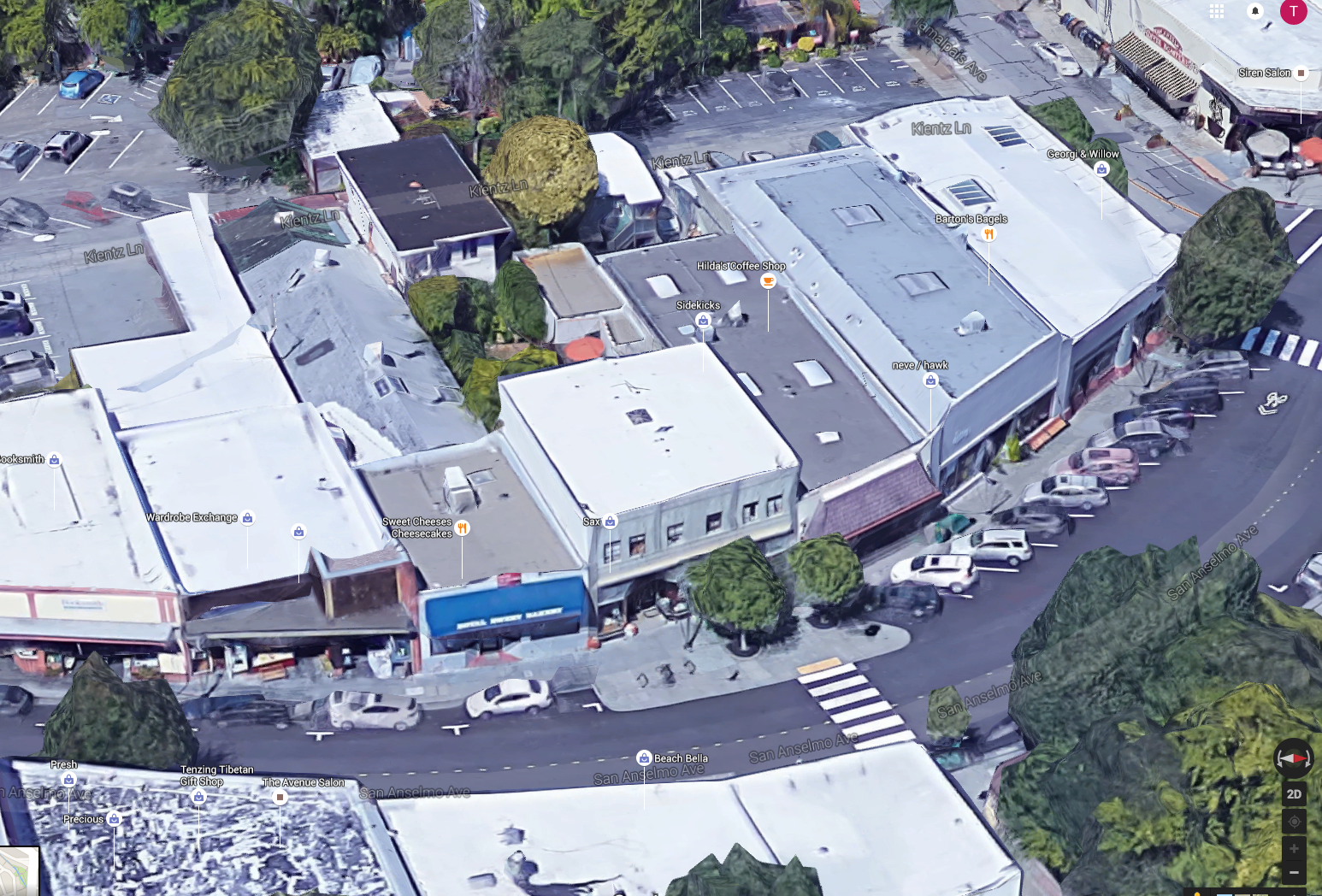
A smaller investor, (although we’re usually talking millions, not hundreds of thousands in high income areas) does have the potential to make “main-street” retail investments.
I’d define “main streets” as the strips of store fronts directly fronting on sidewalks in a few block clusters, and frequently the sites of regional trains tops in the past. For purposes of investment designation, I might also lump in those small isolated commercial buildings on small artery streets in predominately residential neighborhoods.
Main-streets really vary in quality from community to community. In some high-income communities like Palo Alto or Downtown Pasadena, we’ve seen some larger old city centers revive and become almost regional centers. Those few have become extremely attractive high-priced, national tenants. That hasn’t happened in Marin but there are still some smaller retail buildings that see strong enough demand to keep buildings full with tenants paying rents far beyond the development cost of the buildings.
Whether or not national chains come into the smaller, more common main-streets comes down to factors like whether the buildings are large enough to fill a national tenants need, and attaining critical mass of demand; national tenants move in herds. (see regional malls section). The very highest incomes, and the lack of any “perceived blight” do to offering critical social services also are contributing factors.
More often than not, as an owner of “main-street” buildings, you’re stuck (or blessed in a sense of community way) with more local businesses. Still, when you own in a highly affluent area with just the right amount of space available and the spaces hovering between 1000 and 3000 square feet, you can find you own property in quite a vibrant little strip of deli’s, restaurants, salons and boutiques some of which can pay great rent if the street is prospering. People with disposable income visiting a shopping street as a recreational outing really make it possible for many a retailer to make a go at a business. This is the classic “location location location”
As discussed, in neighborhood centers section, often a neighborhood center, with it’s easy parking, supermarkets and drug stores, have pulled the everyday retail traffic away. That can make main-street ownership very tricky in all but the highest-income demographic locations. Exceptions in the past were things like liquor stores on the “way home” side of the street, but, as the coctail culture has died and the caffeine culture thrived, a small building on the “way to work” side of an arterial street can mint money for a small (or national) coffee retailer.
One issue with small retail properties is that very frequently, the worst, hardest to rent, buildings are the ones that come on the market.
In stronger boutique markets, well advised owners will sell buildings unencumbered by leases at very high prices to owner user type investors with strong businesses and ties to the community. One common opportunity is buying a property with below market leases that will yield a low initial return, but, after lease expiration, new higher rents can justify a high purchase price.
A quality well located, and designed building will often sell at a steep premium.
I’ve found that these select retail properties truly were owning offer little more rent per dollar of investment than single family rental homes would. Despite the same dollars of rent, financing is only available at much higher rates, tenants more likely to get in trouble paying their rent through changes in the business cycle, higher vacancy, and significant leasing expenses.
In the worse case, but the most commonly available case, you buy a poorly located retail building based on unrealistic rental rate projections and are stuck with all those rental expenses on top.
Key principle: A tenant cannot pay rent if they’re not making money! Rent can be a significant portion of their overhead and many smaller tenants available simply can bring in enough traffic to keep rents high.
That being said, Find a great retail building at a reasonable price, it maybe much easier to own for decades than that single family house would be.
There are some great properties that might stay full no matter what. A lone restaurant in a neighborhood where permits are difficult can work. The way to work coffee outlet is even better. Hair salons are another type of tenant that tend to be able to pay fair rent once built out for that purpose.
My advice is to grill local brokers and business about a specific retail market. You also need to really know a specific property, and be sure not to over pay. It is possible to get a building where the business will stay for 20 years or more, even if ownership of business changes. Potentially a great investment but finding a high quality retail building in an area you know could mean a decade long wait!